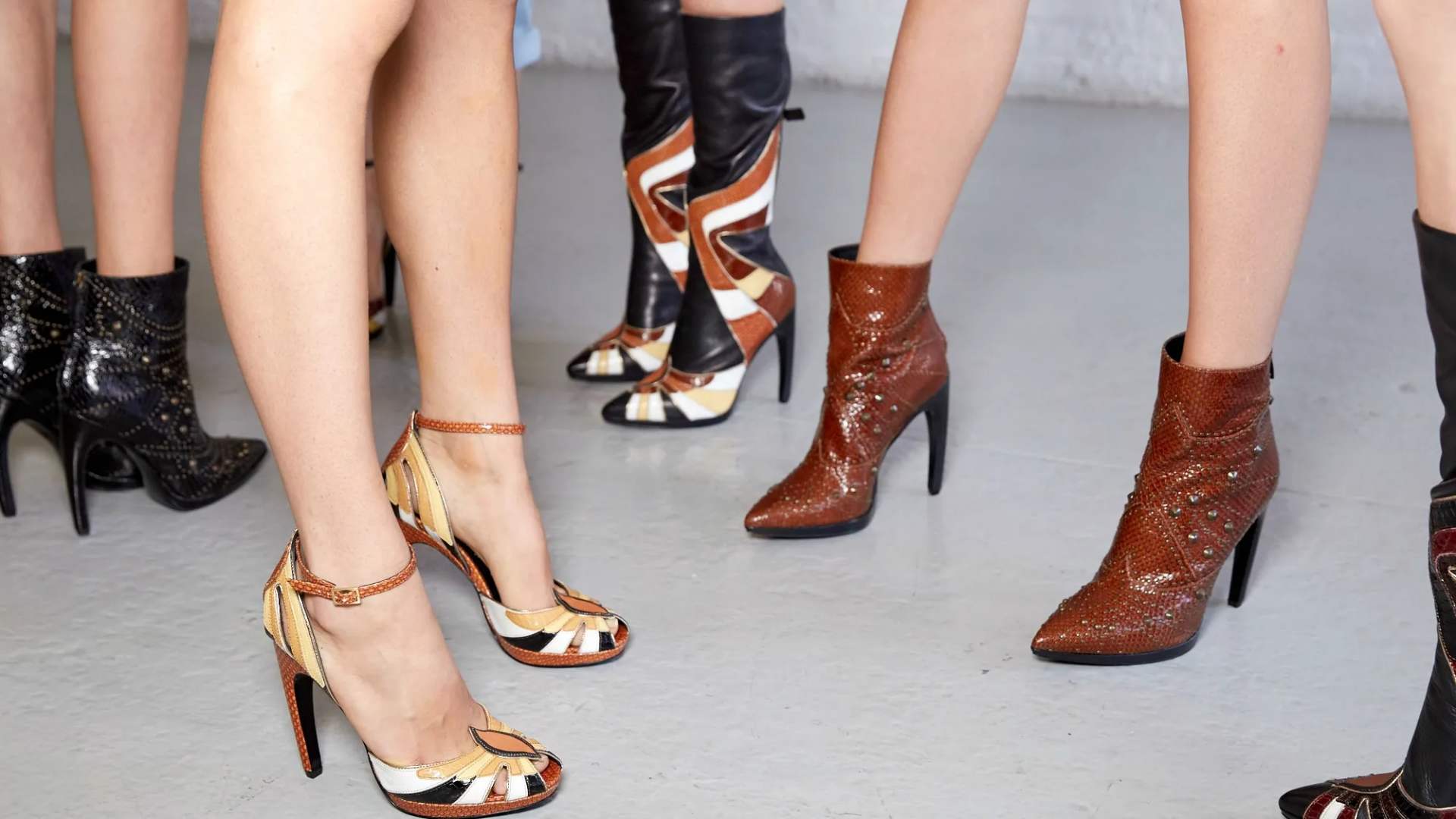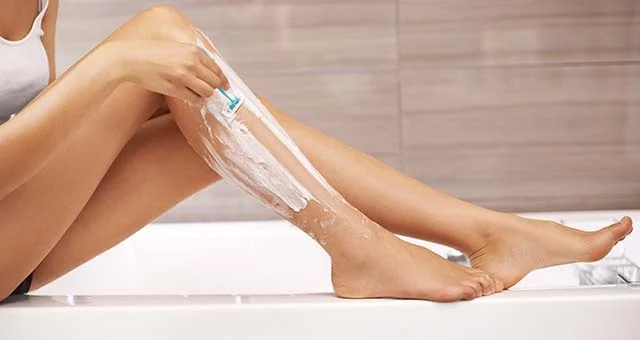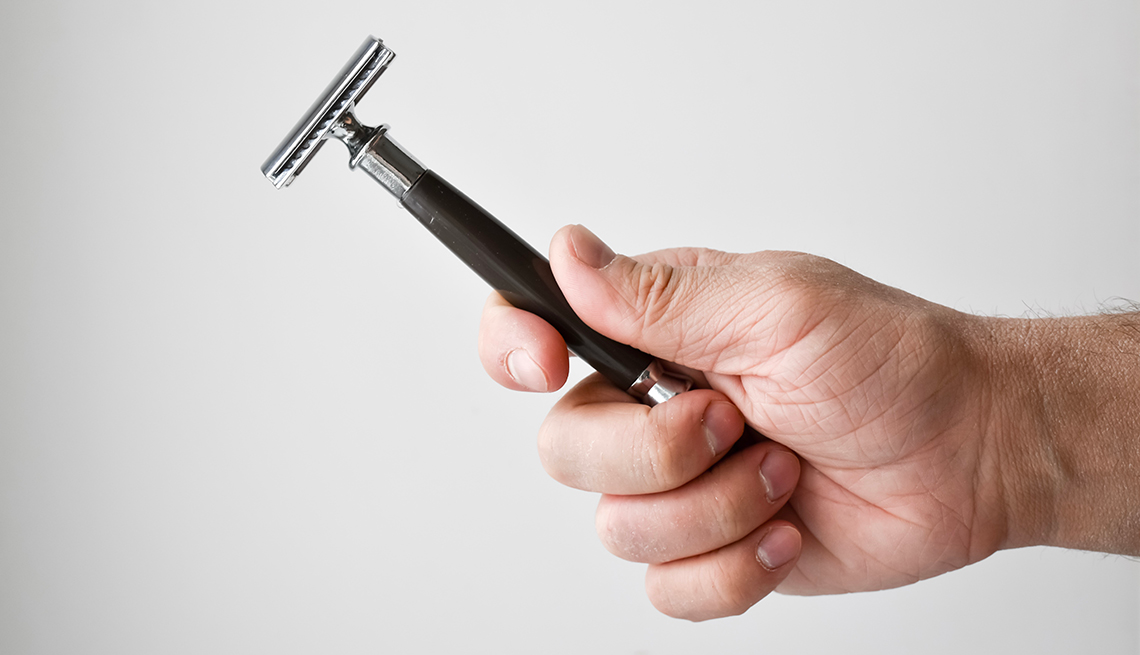How To Shave Your Legs: Guide with 9 Simple Steps
 |
Guide to Shave Your Legs. Image: Knowinsiders.com
The thing about hair removal is that, unlike other normal rites of passage, such as riding a bike or learning how to parallel-park, no one ever actually teaches you how to shave your legs. Even in the beauty world, there are few YouTubers posting videos about how to shave correctly. Tutorials about shaving your legs do exist, but those making them aren't exactly experts. The same goes for waxing your own legs.
If we were to take a wild guess, most of us probably bought a razor, loaded our legs up with shaving cream, and got to shaving—that's it. But if you're constantly dealing with itchy legs, ingrown hairs, and stubble that seems to grow back in 10 minutes, there might be room for improvement in your shaving game. Read on to find out how to shave your legs perfectly.
Why do people shave their legs?
 |
| SCA PICTURES |
Blame it on fashion and the acceptance of varying levels of nakedness.
Until the early 1900s, hair removal was reserved for the skin that showed, which in old timey times was the face, neck, and sometimes — gasp — the forearms.
Fast-forward to the 1920s: Hemlines moved up to the knees and hair removal made its way below them. The hairless leg trend waxed (ha!) and waned over the next few years.
By the 1940s, hair-freelegs were the norm for “ladies” (hard air quotes there, because it’s not just women who shave their legs).
Which direction should you really be shaving your legs?
Googling “how to shave legs” turns up over 51 million results. Wowza! The answer to which direction to shave your legs is split. Some people are #TeamWithTheGrain and others are #TeamAgainstTheGrain.
So, which is right?
 |
| Photo: Loreal Paris |
We reached out to Maggie Sullivan, MD, a dermatologist and the advisor to body care company Royal, to set the record straight. Turns out: Both directions are right, depending on a few things.
“Technically, you can shave your legs either with or against the grain. However, there are some important factors to consider in your decision, like the thickness of your hair, the texture of your hair, and how your skin normally reacts to a razor,” Sullivan says.
“While shaving against the grain can be more effective, the trade-off is often skin irritation and ingrown hairs. Unless you’re one of the lucky few who doesn’t experience these, you’ll probably want to go with the grain.”
How to shave your legs
 |
| Photo: Getty Images |
Ready to have legs as soft and smooth as a baby’s tushy? Let’s get to it!
1. Grab a clean, sharp razor.
It sounds obvious, but how many of us have let a razor go for way too long before replacing it or changing the blade? Yeah, that's what we thought. Using a razor that is dry, sharp, and rust-free will always give you the closest, cleanest shave possible. Dull blades lead to nicks and cuts, so you want to avoid dull razors at all costs. Pros generally advise changing out your blade after 5 to 10 shaves, which could be anytime between a week and a month depending on how often you shave. Many razors now come with moisture indicator strips that fade with use to give you a heads-up that it's time to swap your blade.
Another tip we've found helpful? Invest in a shaving subscription like Billie, Harry's, Dollar Shave Club, or Flamingo—all of which deliver blades or custom shaving kits right to your door.
2. Wet your legs.
We've all probably been in a situation when we've wanted to shave as quick as humanly possible. But here's why it's important to soak your legs in the bathtub or shower for a few minutes before a razor hits your skin: It's easier to miss spots or get nicks when your legs aren't thoroughly wet. "Letting your skin sit in a wet, warm environment allows for your skin and hair to soften," says Whitney Bowe, M.D., a dermatologist in NYC. Softer hair and opened-up follicles (from the steam) make it easier to get a close, comfortable shave, so you're less likely to feel new stubble later that day.
3. Exfoliate.
In addition to soaking your legs, you also want to use a loofah or body scrub to slough off dead skin before you shave. "Some people think that when you shave, you’re also exfoliating your skin, which is technically true," says NYC dermatologist Dendy Engelman, M.D. But she notes it isn't going to give you as clean of a shave if don't you prep the area beforehand, especially if you're prone to razor bumps and irritation. How come? If you don't exfoliate, those dead skin cells can clog up the razor blade, which is what causes razor burn, says Bowe. Exfoliating first essentially creates a clean, even canvas for you to then remove hair.
4. Apply shaving cream.
Shaving cream sounds like something made up by razor companies to charge you an extra $10, but there really is science behind why it's a better option to use it instead of body wash or bar soap. "Conditioning your skin before shaving will soften the hair and the hair follicle," says Engelman. "That way there's less irritation when a razor goes across your skin." Squirt a dollop of shaving cream into your hand and spread a thin, even layer over the surface of your legs. (We're big fans of the Gillette Venus with Olay Moisturizing Shower & Shave Cream.) If you're traveling or really in a pinch, you can use hair conditioner, which makes the best alternate to shaving cream because of its emollient and conditioning properties.
5. Shave against the direction of hair growth.
 |
| Photo: AARP |
Beginning at your ankle, slowly and carefully shave upward. An upward leg shave ensures you're shaving against the direction of hair growth, which provides a closer shave. (While it's inadvisable on the bikini line due to potential razor burn, it's perfectly safe on your legs.) There's no need to press hard—in fact, doing so can cause dimples or divots in your skin, which can lead to nicks or missed spots. The one exception to the "shave against the grain" rule is if you're shaving with the new Schick Intuition F.A.B. razors, which are designed to shave cleanly and safely in both directions.
6. Rinse your razor.
After a few strokes your razor will be filled with both shaving cream and stubble. Rinse it off with clean, warm water and continue shaving. If you notice hairs are stuck (it happens), try holding it directly under the shower head or faucet to let the water pressure push them out. If they're still stuck, you can gently pat the blade on a towel or use toilet paper on a dry razor to finagle them out. Never try to use your fingers to clean the blade.
7. Rinse your legs.
Once you've shaved all the hair on your legs, rinse off and run your hands over them to make sure you didn't miss any spots. (The backs of ankles and tops of knees are often easy to miss.) If you find any lingering stubble, reapply shaving cream to the spots with hair. Reshave and rinse again.
8. Store your razor in a clean, dry place.
While keeping your razor in the shower is most certainly the easiest place to store it, it's actually the worst spot you can leave it. "Not only can keeping your razor in a moist environment rust the blades, it also increases your risk of bacterial or fungal infection," says Bowe. Make sure to put the blade protector back over the blade and stash your razor in a spot where it won't get wet.
9. Dry off and moisturize.
After drying off, use a lotion or oil to hydrate your legs. (These are some of our favorite body oils and lotions.) Moisturizing them will help prevent the little red bumps that can sometimes crop up after shaving. Bonus: It'll also make your legs look and feel extra smooth and silky.
EAD MORE: How To Clean Your Smartphone Screen
Tricky spots
Here’s how to navigate those tricky spots where the skin’s thinner or harder to reach.
Knees
Knees aren’t typically hairy spots, but they’re notorious for infuriating post-shave stragglers and cuts.
Bend your knee just enough to make the skin taut, so you get a closer shave and avoid creases that the razor can snag.
Backs of thighs
Your mirror will do you more of a solid than Pilates when it comes to shaving the backs of your thighs.
Stand in front of a mirror or use a hand mirror to see where the hair is and the direction it’s growing, which, let’s be honest, is usually every direction.
Next, stand or sit — as long as you’re firmly planted to avoid a leg or razor slip. Then start shaving with the hair growth.
Ankles
Effin’ ankles. They’re easy to nick, and they hurt and bleed when it happens.
Prop your foot up on the side of the tub or shower bench for balance and easier access. Then go sloooow as you shave the area, being especially careful at the ankle bone and around back.
Bikini area
Your bikini area is the last place you want to have itchy razor burn or ingrown hairs, so extra attention must be paid.
Take a deep breath, and do this:
1. Spend a few extra minutes soaking the area to soften coarse pubes.
2. Slather on shaving cream and then shave in the direction of the hair growth — not against it.
3. Use slow and steady strokes.
4. If you have balls you’re trying to shave or work around, gently pull the skin taut to avoid nicks.
5. Apply a post-shave serum or oil to prevent redness and bumps, like the Fur Ingrown Concentrate.
Razors to tryThe right tools are key for getting any job done right. To step up your shaving game, try one of these top-rated cartridge razors: Gillette Venus ComfortGlide White Tea Solimo 5-Blade Razor for Women (with 12 refills) Flamingo Razor Here are our top electric picks: Panasonic Wet/Dry Electric Shaver Manscaped The Lawn Mower 3.0 |
 How To Theme iOS With Customised Icons? How To Theme iOS With Customised Icons? Easy steps to customise icons on your iPhones to make it look like a theme. Check it out! |
 How To Cancel or Pause Your Youtube Premium Subcription: Step by Step Guide How To Cancel or Pause Your Youtube Premium Subcription: Step by Step Guide YouTube Premium (formerly YouTube Red) is a subscription service offered by the video platform YouTube. It offers a lot of services and advantages, but sometimes ... |
 How To Set Up 'Covid-19 Medical ID' on iPhone: 6 Easy Steps and 5 Reasons to Install How To Set Up 'Covid-19 Medical ID' on iPhone: 6 Easy Steps and 5 Reasons to Install Apple designed the iPhone to be a multipurpose device, and thanks to its Medical ID feature, it can be legitimately helpful in an emergency event ... |
There are several ways that help you prevent Facebook's tracking on your iPhone. Check out the easiest ways! |
























